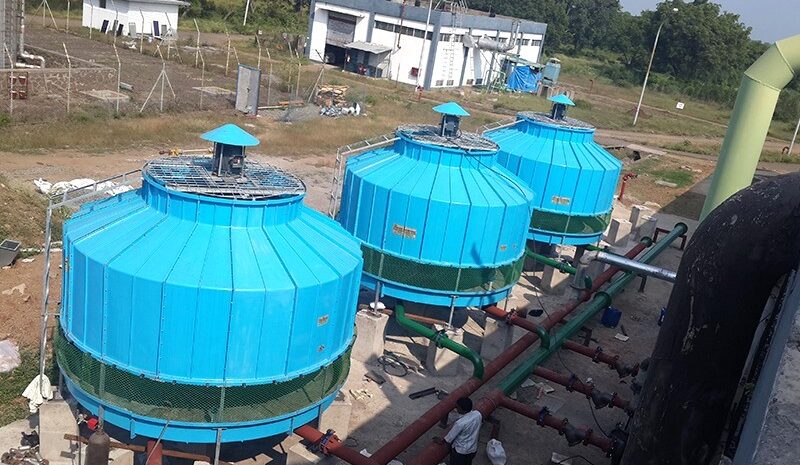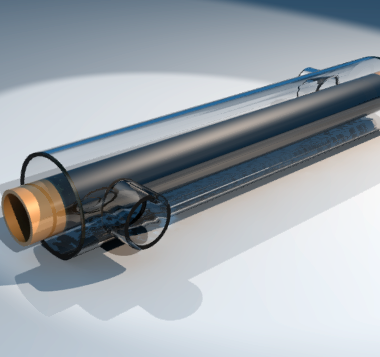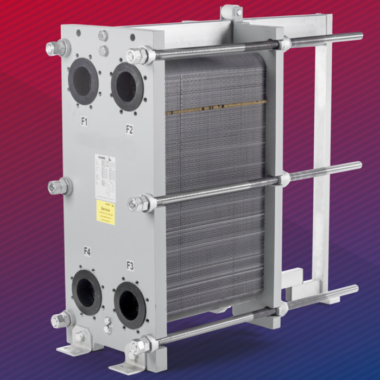Troubleshooting Common Issues in Round Cooling Towers
Troubleshooting Common Issues in Round Cooling Towers
Troubleshooting common issues in round cooling towers is fundamental for maintaining optimal execution, preventing downtime, and ensuring efficient heat dissipation. Here are a few common issues that will occur in round cooling towers and troubleshooting steps to address them:
1) Reduced Cooling Capacity:
Possible Causes: Reduced cooling capacity can result from components such as fouling of fill media, airflow obstructions, low water flow rates, or insufficient fan speed.
Troubleshooting Steps:
- Inspect the fill media for fouling, scale buildup, or debris collection and clean or replace as required.
- Check for obstructions within the airflow path, counting debris, vegetation, or structural obstacles, and remove any blockages.
- Verify that the water dissemination system is working accurately, with adequate water flow rates and proper nozzle arrangement.
- Ensure that the fan(s) are working at the proper speed and check for any mechanical issues such as damaged blades or motor malfunctions.
2) Water Leakage or Overflow:
Possible Causes: Water leakage or overflow can happen due to issues such as damaged seals, worn-out gaskets, improper water level control, or clogged drain lines.
Troubleshooting Steps:
- Inspect the tower bowl, sump, and channeling for signs of leaks, corrosion, or damage, and repair or replace any defective components.
- Check the integrity of seals and gaskets around get to panels, doors, and joints, and replace any damaged or worn-out seals.
- Adjust the water makeup and bleed-off rates to preserve the specified water level in the tower basin and prevent overflow.
- Clear any debris or obstructions from the drain lines and guarantee they are properly sloped to facilitate drainage and prevent blockages.
3) Vibration or Noise:
Possible Causes: Excessive vibration or noise can be caused by misalignment of fan edges, worn-out bearings, loose components, or mechanical issues in the drive system.
Troubleshooting Steps:
- Inspect the fan blades for damage, wear, or misalignment, and adjust or replace as fundamental to ensure appropriate alignment and balance.
- Check the condition of fan bearings and motor mounts, and lubricate or supplant them if worn-out or damaged.
- Tighten any loose bolts, nuts, or fasteners within the cooling tower structure, fan gathering, or engine mounts to reduce vibration and noise.
- Verify that the drive system components, such as belts, pulleys, and shafts, are legitimately adjusted and tensioned, and adjust as required.
4) Water Quality Issues:
Possible Causes: Water quality issues such as scale buildup, biological development, or corrosion can influence cooling tower performance and lead to equipment damage.
Troubleshooting Steps:
- Execute a comprehensive water treatment program to control scale, corrosion, and biological fouling in the cooling tower water.
- Monitor water quality parameters such as pH, conductivity, and biocide levels regularly and adjust treatment chemicals as required to maintain optimal water chemistry.
- Clean the tower basin, fill media, and conveyance system regularly to remove debris, sediment, and biological development that can contribute to water quality problems.
5) Poor Water Distribution:
Possible Causes: Poor water distribution can result from clogged nozzles, uneven spout spacing, air entrainment, or insufficient water flow rates.
Troubleshooting Steps:
- Inspect the water distribution system, counting spray nozzles, headers, and channeling, for clogs, obstructions, or damage, and clean or replace as required.
- Guarantee that the spray nozzles are evenly spaced and situated to supply uniform water distribution over the fill media surface.
- Adjust the water flow rates and pressure to realize proper coverage and distribution throughout the cooling tower.
By following these investigating steps and addressing common issues instantly, you’ll maintain ideal execution and reliability of round cooling towers, guaranteeing effective heat dissipation and minimizing downtime. Standard preventive maintenance, thorough inspections, and proactive interventions are key to identifying and settling cooling tower problems some time recently they escalate into major issues.







Regulations and Safety Standards for Round Tower - Cool Fab Equipments June 24, 2024 at 11:05 pm
[…] Round cooling towers are fundamental components in different businesses, counting power generation, HVAC, and manufacturing. Guaranteeing their secure and proficient operation requires adherence to stringent directions and security standards. These rules are outlined to protect open wellbeing, guarantee environmental compliance, and maintain operational proficiency. This blog will talk about the regulations and safety standards overseeing the operation of round cooling towers. […]